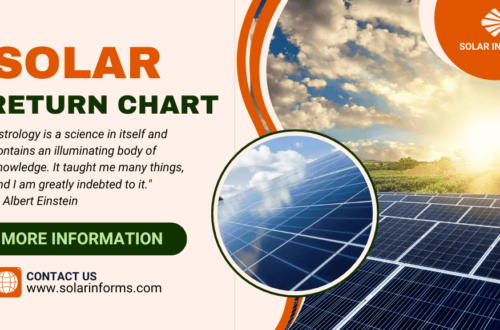The speed and efficiency of a 220W solar panel are crucial when planning your energy needs. As solar panels don’t have speed, Instead they have a power output rating which is measured in watts (W). This guide breaks down what “220W” really means, how fast is a 220W solar panel? can develop power, and how different factors influence its performance.
What Does “220W” Mean in Solar Panels?
When you see “220W” on a solar panel, it refers to the panel’s maximum power output under ideal conditions. The “220W” rating indicates the panel’s maximum power output under ideal conditions, specifically:
Spectrum: Standardized solar spectrum (e.g., AM 1.5)
Irradiance: 1,000 watts per square meter (W/m²)
Temperature: 25°C (77°F)
This means the panel can generate 220 watts of electricity per hour when exposed to peak sunlight. However, the actual output may vary based on several factors, including the amount of sunlight and the panel’s efficiency.
How Efficiency Affects Speed in Solar Panels
The efficiency of a solar panel plays a significant role in how quickly it can convert sunlight into usable electricity. A 220W panel with higher efficiency will generate electricity faster than a less efficient one. Efficiency is measured by the percentage of sunlight that the panel converts into energy. For instance, if a 220W panel has an efficiency of 18%, it means 18% of the sunlight hitting the panel gets converted into electricity.
To learn more about solar panel performance read our article” Is Your Solar Panel Charging Your Battery? How to Ensure Optimal Performance“
Factors Influencing the Speed of a 220W Solar Panel
Sunlight Exposure and Its Impact
The amount of sunlight your panel receives directly affects how quickly it generates electricity. More sunlight means faster energy production. On average, a 220W panel needs about five to six hours of peak sunlight to generate its full potential. However, cloudy days or shading can reduce this output.
Angle and Position of the Solar Panel
Proper positioning of your solar panel can significantly impact its speed. The angle should match your location’s latitude to maximize sun exposure throughout the day. A well-positioned 220W panel will generate electricity more quickly than one that isn’t angled correctly.
Environmental Conditions and Their Effects
Temperature, shading, and weather conditions can also influence the speed of your solar panel. High temperatures can reduce efficiency, while shading can block sunlight, both of which slow down energy production. Keeping your panel clean and ensuring it is free from blocks will help maintain optimal speed.
Check: How to Clean and Maintain Anti-Dust Filters for IP21 Inverters

Comparing 220W Solar Panels with Other Wattages
220W vs. 300W Solar Panels: Which is Faster?
A 300W solar panel will generally produce electricity faster than a 220W panel due to its higher power output. However, the difference in speed depends on your specific energy needs and the efficiency of the panels in question. A 220W panel is often sufficient for smaller energy requirements and can be more cost-effective.
220W Solar Panel: How Does It Stack Up Against Lower Wattage Panels?
Compared to lower-wattage panels, a 220W panel offers a better balance of speed and efficiency. It can generate more electricity in a shorter time than a 100W or 150W panel, making it ideal for moderate energy needs without taking up too much space.
Practical Applications and Standard Output
What Can You Power with a 220W Solar Panel?
A 220W solar panel can power small appliances, charge batteries, or even contribute to a small off-grid system. It can run devices like LED lights, a small fridge, or a laptop for several hours, depending on the usage and sunlight availability.
Estimating the Time to Charge a Battery with a 220W Solar Panel
If you’re using a 220W panel to charge a 12V battery, it can take around 4-6 hours of sunlight to fully charge, depending on the battery’s capacity. This makes it suitable for weekend trips or backup power during emergencies.
Solar panel charging speed depends on the connected battery or electrical system. A 220W solar panel can charge a battery at a rate of:
- Approximately 18-20 amps per hour (Ah) for a 12V battery system
- Approximately 9-10 amps per hour (Ah) for a 24V battery system
Keep in mind that actual charging speeds may vary due to factors like panel efficiency, temperature, shading, and system losses.
Maintenance Tips to Optimize Performance
Keeping Your 220W Solar Panel Clean and Efficient
Regular maintenance, such as cleaning the panel’s surface, ensures it absorbs maximum sunlight. Dirt and debris can block sunlight and reduce the panel’s speed. Cleaning your panel every few weeks helps maintain its efficiency and speed.
Best Practices for Positioning and Adjusting Your Solar Panel
Ensure your panel is positioned correctly, with an angle that matches your location’s latitude. Adjust the angle periodically to match seasonal changes, which will help maintain the speed and efficiency of your 220W solar panel.
Conclusion
A 220W solar panel offers a solid balance between power and efficiency, making it a great choice for moderate energy needs. Its speed and performance depend on factors like sunlight exposure, positioning, and environmental conditions. By understanding these variables and maintaining your panel correctly, you can ensure it delivers optimal speed and performance for your specific needs.



